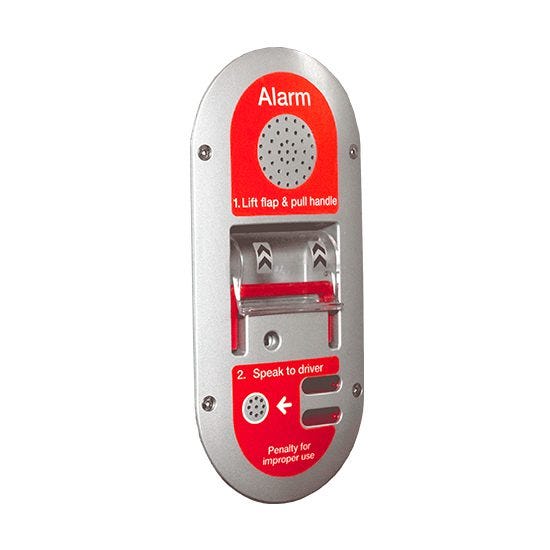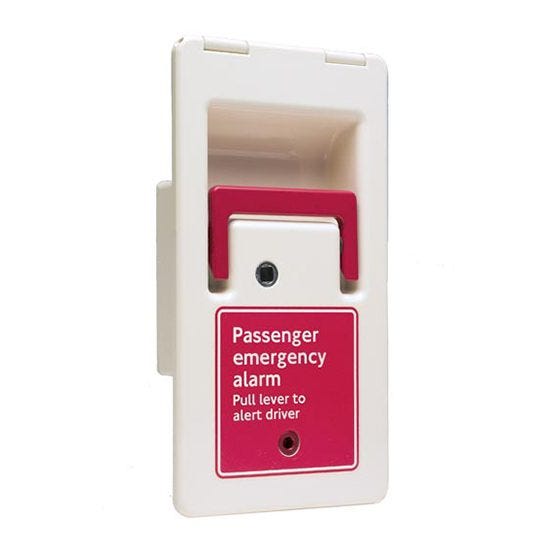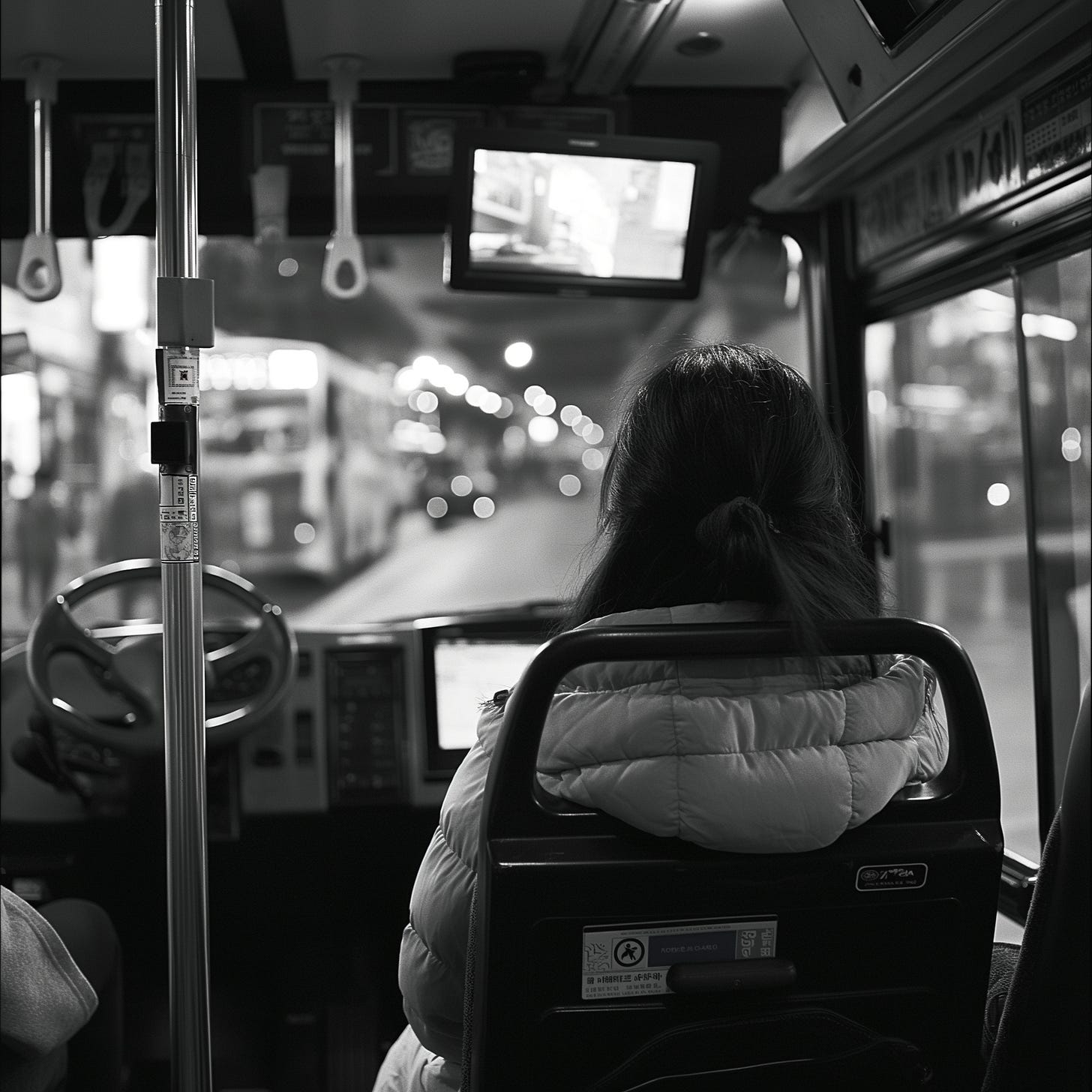Public transport systems are integral to daily life, especially in urban settings where they serve as the primary means of transportation for millions of people. However, the dense crowds and the public nature of these services often make them targets for petty crime and other security risks. I have compiled a set of comprehensive guidelines designed to enhance your safety on public transport.
Stay Informed
Before embarking on a journey, it is imperative to consult real-time updates about your planned routes. Many transport authorities use mobile apps or websites to broadcast alerts concerning delays, disruptions, or security threats which can help you make informed decisions.
Try to avoid using the public transport during protest, football matches and religious rallies to avoid overcrowded conditions which can often lead to chaotic situations and increase the risk of theft or assault. When it comes to drunks and religious fanatics, I have heard such appalling stories that would curl your hair!
Plan Your Route
It is essential to be aware of the distance, direction, and duration of travel to your destination. Opting for safer routes and travel times can significantly mitigate risks. Chose routes that are well-trafficked and well-lit, and try to travel during busier periods to avoid the vulnerabilities associated with off-peak hours, especially during the night. Effective planning minimises the time spent waiting at stops or stations, hence reducing your exposure to unnecessary risk.
Unless you live in Japan, I am sure you are aware that public transport is not always reliable. When you plan your route, consider having a backup plan, an alternative way if your primary transport method gets delayed or cancelled. This can be a different route or choosing an alternative mode of transport like a licensed taxi. Read more on How to Stay Safe in Taxis
During public holidays, when transport systems are often at their busiest, it is wise to know the peak hours and plan to travel outside these times. Always have an alternative route in mind to circumvent unexpected gatherings or blockades. Inform a family member, friend, or colleague of your travel plans and schedule. Contact them upon departure and arrival at your destination. Should you fail to make contact as expected, they will be alerted to a potential issue.
While Waiting for Transport
Stay Alert
Maintaining awareness of your surroundings is vital, and you need to practise situational awareness at all times. Avoid wearing headphones and limit distractions such as excessive mobile phone use to better detect suspicious behaviour or potential threats. It is vital to identify threats early by recognising the pre-incident indicators such as staring, pacing, and distractions. I wrote extensively on this subject in “Pre-incident Indicators and How to Recognise Them” and also about the four levels of awareness and how to stay alert in condition yellow.
Position Wisely
While waiting for your ride, choose to wait in well-lit, populated areas where Security personnel are visibly present. If Security is not present, many stations have zones with enhanced security and CCTV surveillance, for example, near station offices, lounges, shops, entrances and exits, stairs, and fire exits. Engage in passive awareness techniques, like positioning yourself with your back against a wall, with a clear view of all entrances and exits. Avoid isolated spots, and if possible, wait in groups.
Onboard Public Transport
Secure Your Belongings
Be particularly cautious with personal belongings in crowded areas. Avoid displaying expensive-looking watches, rings, necklaces, or other jewellery, as pickpockets are skilled and can access your items without your awareness. They often employ distraction techniques to their advantage. For further reading on this topic, refer to the previous article titled “Social Engineering Secrets that Everyone Needs to Know (Part 2)”.
For the love of God keep your posh phone and wallet out of those back jean pockets—unless you are looking to donate to the 'Pickpocket Charity Fund'!
Instead, keep your belongings secure and maintain physical control over them at all times. If feasible, conceal them under your coat or jacket. Use anti-theft bags or backpacks equipped with secure zippers and ensure they are always closed. In crowded situations, consider wearing your backpack in front to safeguard your possessions.
Always keep your purse, shopping bag, backpack, packages, or other items in your lap, on your arm, or securely between your feet. Avoid leaving them unattended on an empty seat.
Enhance your personal security by using mobile apps that provide emergency alerts and enable you to share your location with trusted contacts in real-time. Leverage technology to protect your valuable items by employing GPS tracking devices, such as AirTag-like trackers, and installing anti-theft applications on your mobile devices to facilitate remote locking in the event of theft.
For clear guidance on setting up and using the Emergency SOS feature on your devices, follow the links provided for specific instructions:
iPhone: Learn how to configure and activate Emergency SOS.
Android: Get detailed steps on setting up and using Emergency SOS.
These links will direct you to the official instructional websites for each platform.
Choose Your Seat Wisely
Sit in areas close to the driver or other transport staff if possible. Choose seats near the driver or in view of CCTV cameras, as criminals are less likely to target passengers in well-observed areas. Avoid sitting near doors, as these areas can make you an easy target for thieves who may try snatching jewellery or personal belongings from people near the door and then exiting just before the doors close. If possible, find an aisle seat. This allows you to observe everything around you and helps you avoid being "boxed in” against the window. Observe the behaviour of others around you. If you feel uneasy or threatened, change your seat and/or alert the driver. If you are travelling alone, avoid the quieter carriages and instead join those with more people. The common term 'safety in numbers' can be extended to include people you do not know, especially when on transport. You are less likely to be assaulted or injured if there are a greater number of witnesses. However, it is important to note that when tightly packed into a carriage, you may be more prone to pickpocketing and should therefore keep all possessions close. If possible, try to avoid overcrowded vehicles or train compartments. Be alert at all times and do not fall asleep while using public transport, especially when travelling by yourself. When possible, travel with a group as there is safety in numbers, especially in unfamiliar areas
Interact Carefully
Be wary of unsolicited help or questions that divert your attention from your possessions. It is often safer to politely decline assistance or direct the individual to a professional or authority figure nearby. Always maintain a comfortable distance when approached by a stranger, as this gives you time to properly assess the situation. Be cautious when engaging with strangers; offering information about your personal circumstances or travel plans can inadvertently make you a target.
Dealing with Confrontations
Stay Calm and keep your distance
In confrontational situations, maintaining a calm demeanour is crucial. Manage your body language and tone of voice to prevent escalating tensions—remain assertive yet non-confrontational, ensuring your voice remains steady and your posture neutral. When faced with theft, especially if the attacker is armed, consider the safety benefits of relinquishing a decoy item, such as a fake wallet or an old mobile phone, to avoid physical harm. Keep such items handy in high-risk areas as a preventative measure to protect your valuables. Additionally, learning basic self-defence techniques and carrying legal self-defence tools like personal alarms or defence spray can enhance your safety.
If you find yourself in a situation where you are being assaulted, remember that your primary goal is to protect yourself and find a way to escape. Do not worry if you are not as big or strong as the attacker; when under attack, your body taps into a primordial survival mode, releasing a massive adrenaline rush. This adrenaline surge causes your heart to beat faster and harder, quickly pumping blood to muscles and vital organs, enhancing your physical abilities for quicker and more powerful movements crucial during a confrontation.
Quickly assess your surroundings for potential escape routes or identify items that could be used in your defence. Items like heavy bags, umbrellas, keys, pens, rolled-up magazines, water bottles, scarves, mobile phones, shoes, seat cushions, emergency hammers, and flashlights can all be repurposed as tools for self-defence to create distance or incapacitate an attacker.
If escape is not immediately possible, you must defend yourself, and your response must be extremely brutal—so brutal that it will make the attacker think twice. Use everything at your disposal—kick, punch, scrape, and bite if you must, targeting vulnerable areas such as the eyes, nose, throat, and groin. Strikes to these areas can be effective in temporarily disabling the assailant, increasing your chances to escape.
Additionally, adrenaline acts as a natural painkiller by activating the body’s pain-suppressing receptors, reducing the sensation of pain and allowing you to continue fighting or fleeing despite injuries. Your lungs will dilate, increasing air flow to meet the heightened oxygen demand of your body's elevated physical activity, and your pupils will dilate to improve your vision under low-light conditions.
Always draw attention to your situation by shouting loudly, which can deter the attacker and alert nearby people to your distress. Use clear, strong commands such as "Back off!" or "I need help!"
Remember, your safety is paramount, and finding a way out of the situation is more critical than subduing the attacker. It is crucial to understand that the effects of adrenaline are temporary and are meant to help the body handle immediate threats. Therefore, always look for an opportunity to escape and prioritize your safety above all else.
Seek Help
As soon as you are able, get to a safe location and call for help. Contact the police and seek medical attention if needed. Utilize emergency communication devices available on many buses and trains. These might include alarms or direct communication links to the driver or transport authorities. Do not hesitate to use these tools in an emergency to alert authorities quickly and efficiently.


After Your Journey
Be Observant Exiting Transport
Remain vigilant when leaving transport facilities. Criminals often target passengers moving from crowded transport hubs to less populated areas. If you suspect you are being followed upon exiting a vehicle or station, proceed immediately to a well-lit, populated area and call the police or loudly seek help.
Report Incidents
Always report any incidents to transport authorities or the police. Reporting is vital for improving future security measures and alerting authorities about potential threats.
Report Suspicious Behaviour
Be alert to individuals who exhibit threatening or distressed behaviour. Such individuals may pose a risk to themselves or others. If you encounter such behaviour on a platform or in a carriage, report it to the Police from a safe distance. Include specific details like the station and line involved to aid their response.
Preventing Terrorism
Be proactive in maintaining safety by reporting any unattended items or unusual activities. Signs of suspicious activity may include:
Individuals taking photos of security arrangements or attempting to access restricted areas.
Unattended bags or individuals examining security setups, such as filming CCTV cameras.
People avoiding contact with rail staff and police, or possibly concealing something under their clothing.
In case you discover suspicious items or behaviour, follow these steps:
Notify a police officer or transport staff member directly.
For non-urgent reports, contact the local transport police or appropriate authority. Often, transit systems have specific contact numbers or methods for such reports.
In emergencies, always call the local emergency number to ensure immediate action
TLDR
Here are the key bullet points to remember for staying safe on public transport, drawing from the comprehensive guidelines provided in the article:
Stay Informed: Always check real-time updates about your routes using apps or websites provided by transport authorities.
Plan Your Route: Choose well-trafficked and well-lit routes and travel during busier times to avoid isolated scenarios. Always have a backup plan in case your primary option fails.
Stay Alert: Keep vigilant, limit distractions such as mobile phone usage, and practice situational awareness.
Position Wisely: While waiting, choose locations near security features like CCTV or where personnel are visible. Avoid isolated areas and, if possible, wait in groups.
Secure Your Belongings: Avoid displaying expensive items and keep valuables secure and under personal control, preferably under your clothing. Consider using anti-theft bags or backpacks.
Choose Your Seat Wisely: Sit close to the driver or in view of CCTV cameras, and avoid sitting near doors to prevent quick thefts.
Interact Carefully: Be cautious when engaging with strangers and avoid sharing personal details.
Deal with Confrontations Calmly: Maintain a calm demeanour, manage your body language and tone to avoid provoking further aggression. Consider carrying decoy items like a fake wallet and an old phone to divert thieves.
Seek Help: Use emergency communication devices when necessary and do not hesitate to report incidents or suspicious behaviour immediately.
Report Suspicious Behaviour and Incidents: Always report any unusual activity or incidents to help improve transport security and response strategies.
Preventing Terrorism: Be proactive by reporting unattended items or people engaging in suspicious activities.
These guidelines are crafted to maximize your safety on public transport, enabling you to take proactive steps toward personal security across various travel scenarios. Safely navigating public transport requires proactive personal security measures. Stay informed, plan your journey meticulously, and remain vigilant to significantly reduce the risks associated with public commuting. Effective personal security is not just about reacting to immediate threats but also about anticipating and preparing for potential challenges. By adhering to these guidelines, you will not only protect yourself but also contribute to a safer environment for all passengers.
Safe travels, and remember, your awareness and proactive actions are key to ensuring a secure and pleasant journey.





